— By Glynis Triall-Nash
— Photographs by Lauren Bamford
Using hand-selected European straws and antique trimmings, Tamasine Dale is bringing high fashion quality and confidence to everyday headwear. Here, the Melbourne milliner invites us into her studio to see what goes into making the most intriguing of accessories.
“It’s a classic scene that probably hasn’t changed much since the 1900s, when women used to all work around a table and sew,” says milliner Tamasine Dale of her workspace. “[Much like then] we all sit around a very big table and work on hats and talk and sew.” Working from the lightfilled studio in her South Yarra home, Dale and her occasional workforce of three other hatmakers are among a cohort of craftspeople resisting the increasing pace of fashion. “It’s meditative, it’s one of those slow processes, like slow food,” Dale says of the art of millinery.
Flanking her studio is a meticulously organised storeroom filled with millinery materials and other supplies that Dale has been amassing for decades, many from annual trips to the UK, France and Italy. Some of the wooden hat blocks she uses are a century old, with her urge to collect them dating back to the early days of her career in the 1980s. Some found her; “When I first started out and had articles written about me, I remember this couple called me and said ‘we used to have a hat factory in the ’20s and have all these blocks we don’t know what to do with — would you like them?’ They were so thrilled that someone young was doing millinery and keeping it alive.”
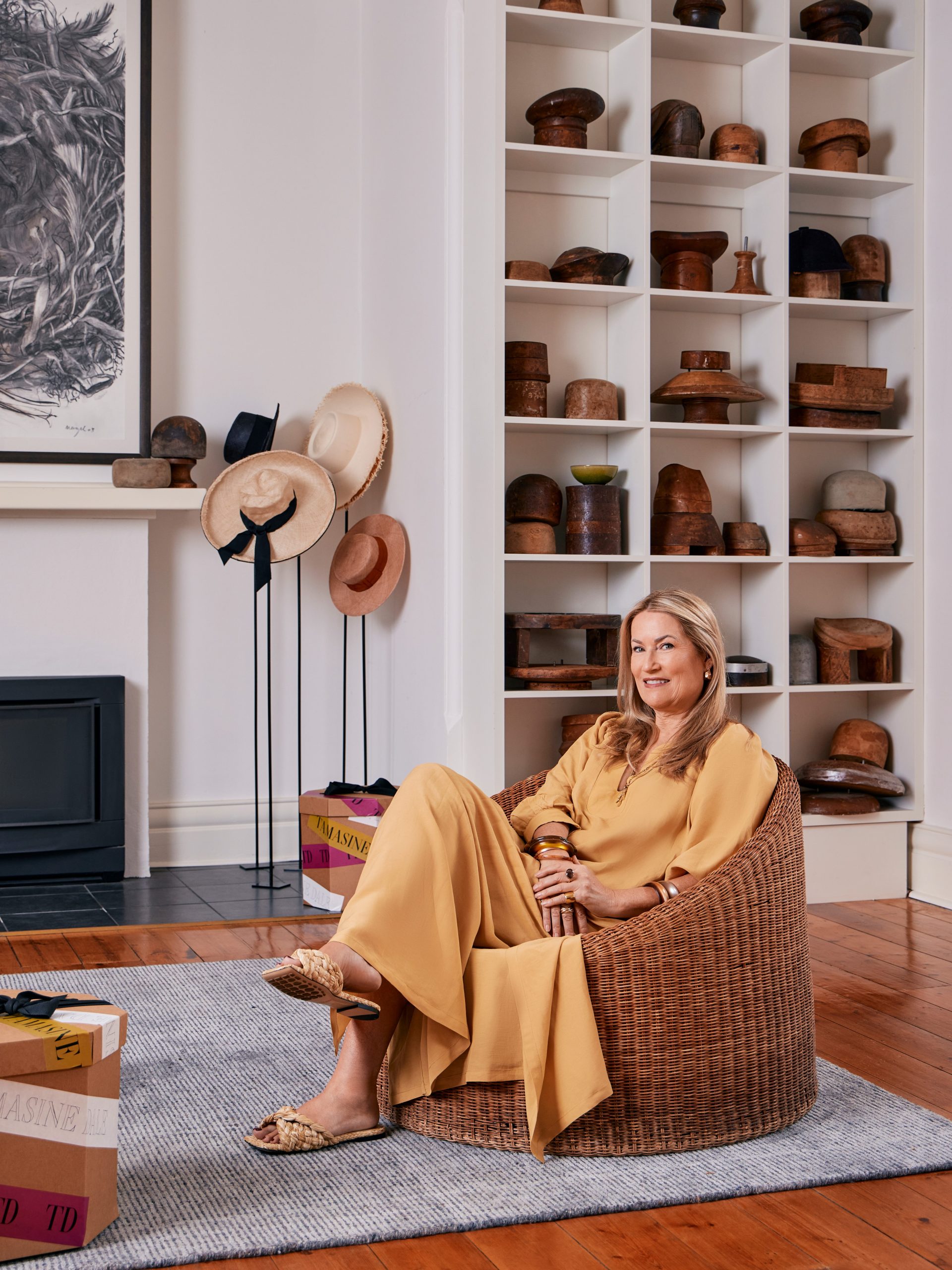
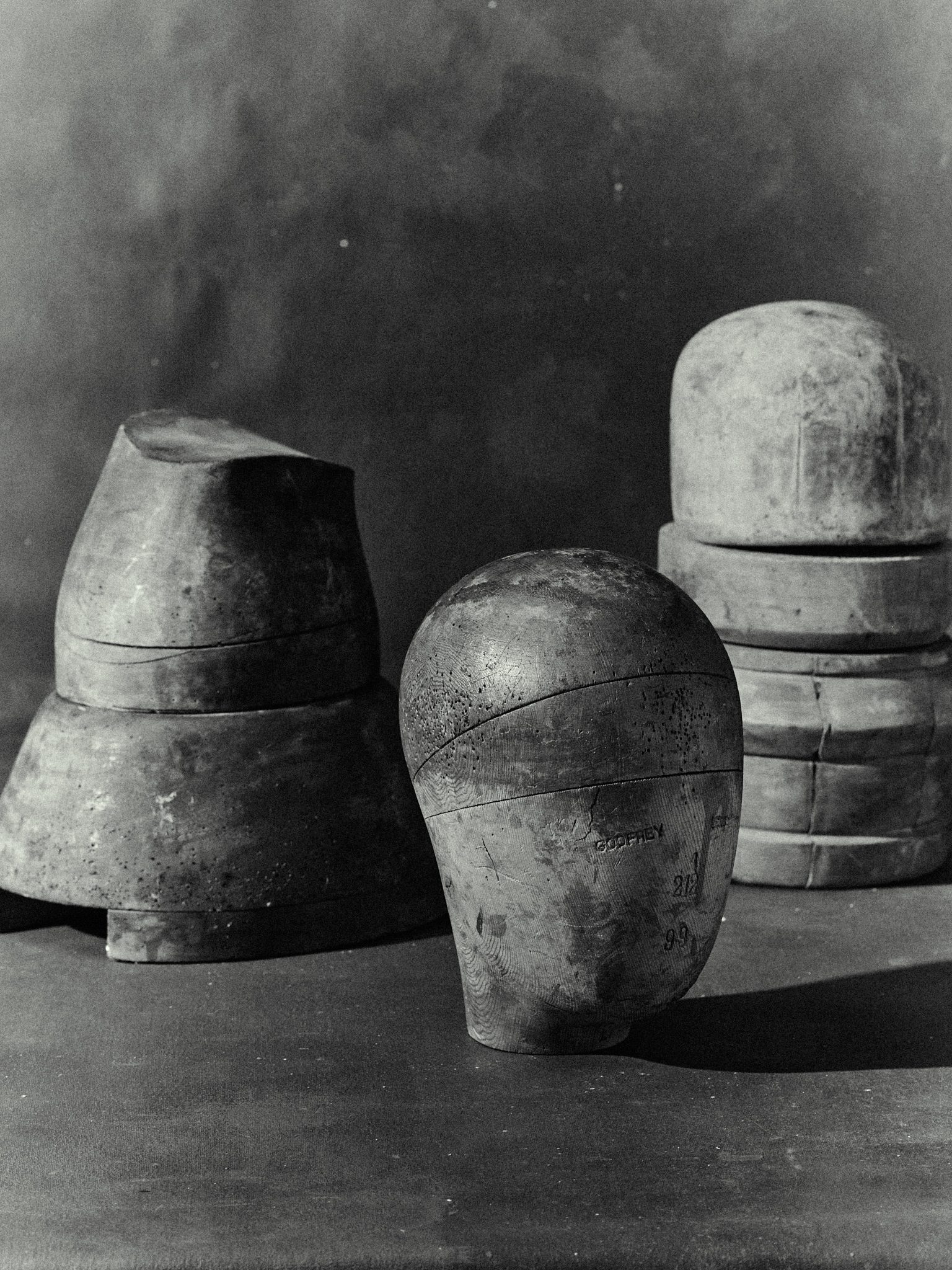
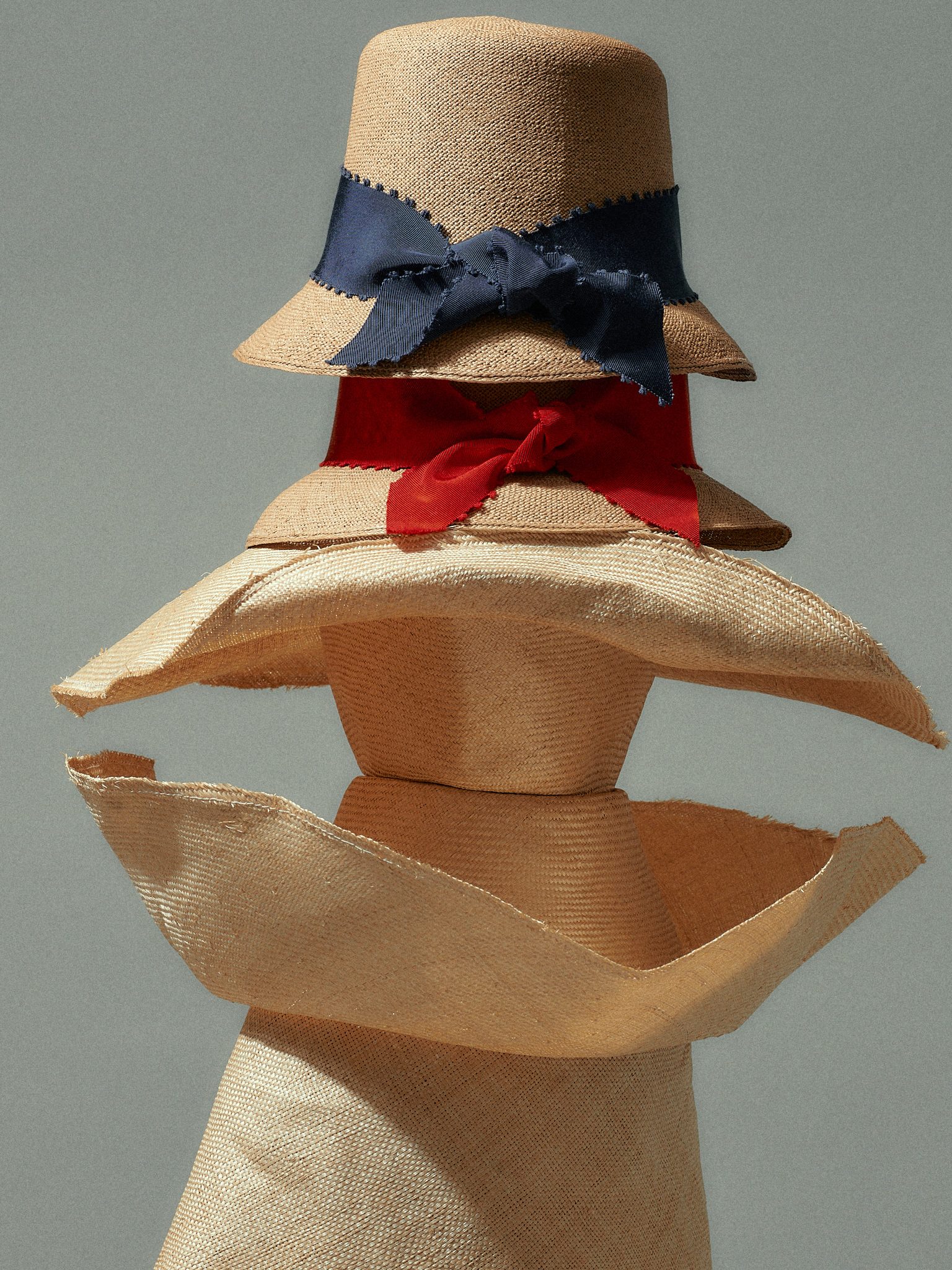
Working largely in straw, Dale is focused on creating a small but concise collection of summer hats. She recently returned to her business after 20 years spent raising children, studying and working behind the scenes in fashion, including creating hats to order for Paris-based designer Martin Grant and Australia’s Scanlan Theodore (whose founder Gary Theodore is her ex-husband).
Each hat begins with a ‘hood’, a simple form made from woven straw sourced in Europe. “The straws that I choose are very fine, like the finest linens or silks. You don’t see them very much anymore, for a few reasons,” she says. “They’re expensive, hard to find, and you have to know what you’re doing with them.”
Similar to the process of designers draping fabric on a mannequin, Dale’s process begins with the materials and her hands, rather than with a sketch. “It’s exactly the same [as the mannequin approach]. Straws don’t necessarily look good on every block and some straws work better on different blocks,” she explains.
The blocking method involves steaming and hand-moulding the straw hoods on to the wooden blocks. “You’re governed by the hat blocks that you have,” Dale continues. “Over the years I’ve had hat blocks made to shapes that I wanted, so now I have a library of shapes that I can call on.”
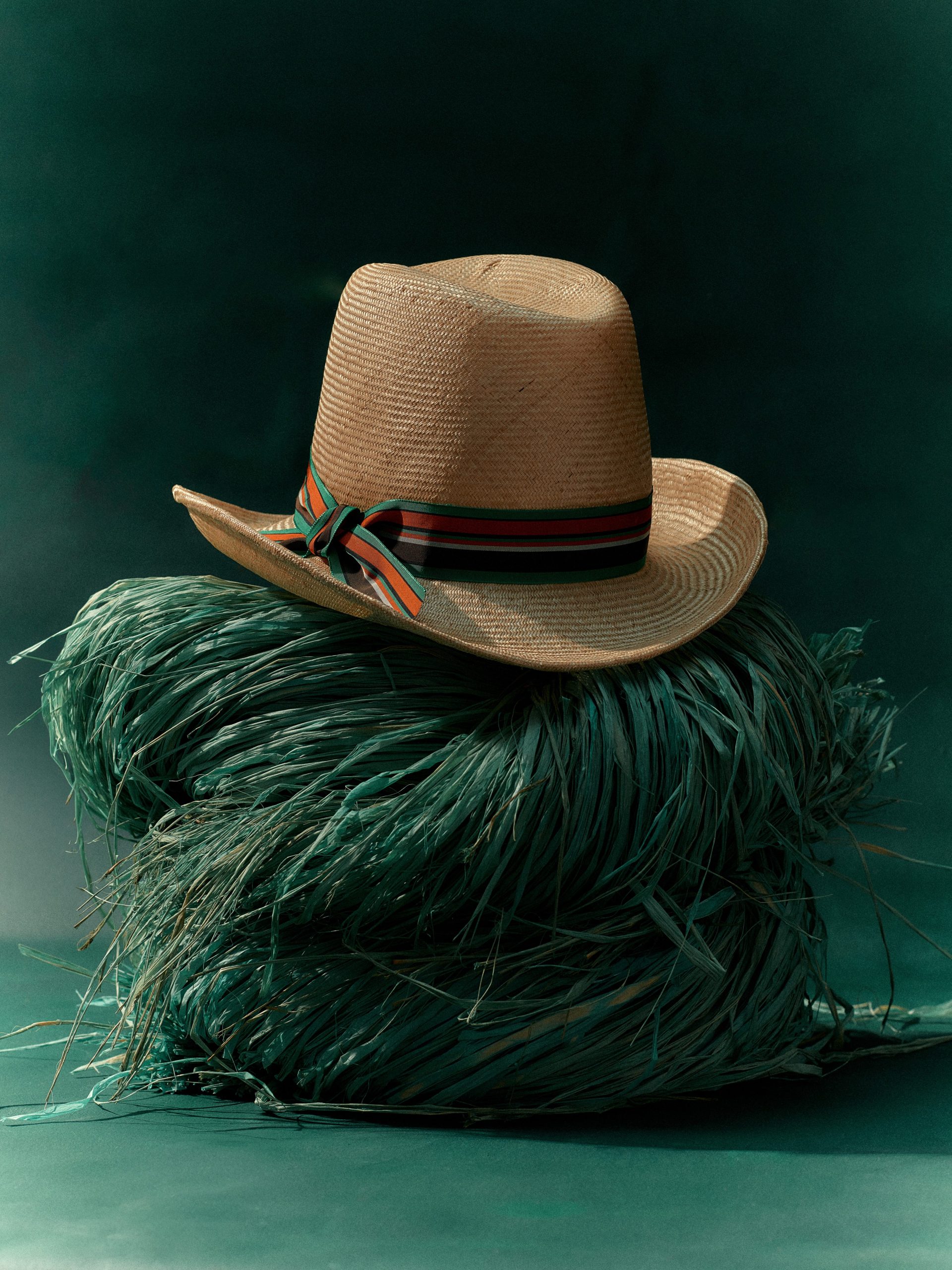
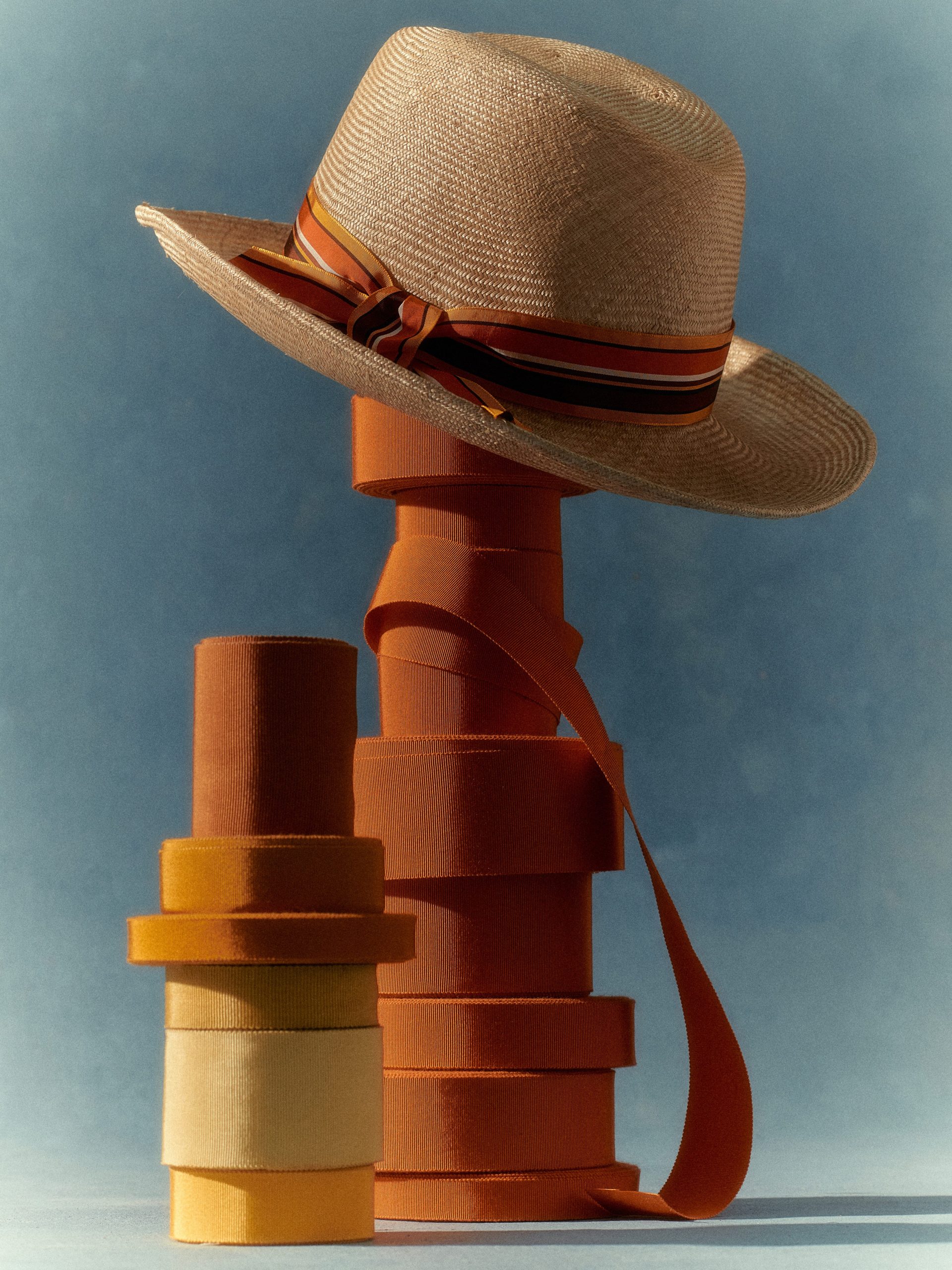
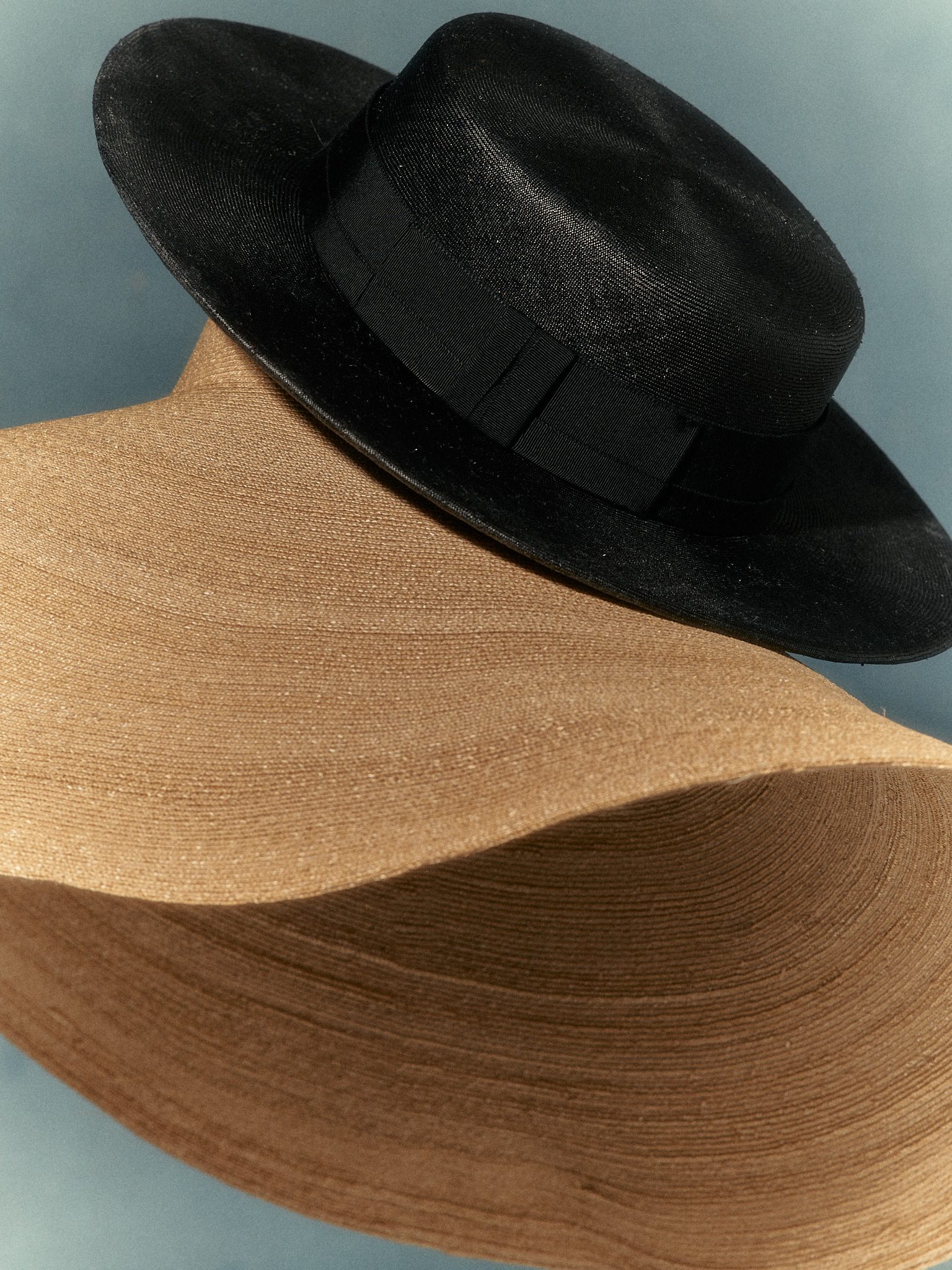
Once shaped, the straw must rest on the block at least overnight to set. “The longer it sits on the block the better shape it will take,” she says. “It has to dry and shrink to the block.” She continues: “The next day you take it off and start putting the pieces together. A lot of the brims in this collection are hand-rolled. If you think about the edge of a scarf that’s rolled and hand-stitched, it’s a similar process but we’re working with straw. It’s very fine and you have to know how to do it, but it gives you this beautiful, soft edge. Underneath that rolled edge is a wire that’s holding it into shape — that’s like putting its skeleton in place.”
An adjustable headband may go inside, perhaps some lining, depending on how comfortable the straw is. “I try to only work with comfortable, non-scratchy straws, but occasionally if it’s a garden hat I’ll use something else.”
Trimmings are the final flourish:
“Often the hat calls for what it wants”
“I’ve some beautiful raffia handmade flowers I bought in Florence, so they’re going on some garden party hats, not your classic everyday hat.” Grosgrain ribbons are a Dale signature. “I have a beautiful collection of vintage trims as well. I’ve always used them but am digging deeper into my stores and using them a lot more [lately].”
While some of Dale’s early hats now sit in the collections of institutions including the National Gallery of Victoria and Sydney’s Museum of Applied Arts and Sciences, she is thrilled to be back on the shelves of Melbourne fashion and accessories boutique Christine, alongside global peers such as Philip Treacy and Maison Michel Paris.
Dale says these hats are not the sort of styles destined for Flemington or Randwick, and while she previously tried to make her business work all year round, creating beautiful felt and velvet hats in winter, there is simply too small a market for winter hats in Australia. The resurgence of interest in summer hats, largely owing to growing awareness of the need for sun protection, has made space for her recrystallised creative mission: “To make beautiful hats that I want to wear every day.”
Tamasine Dale’s SS23 collection is available at Collins Street boutique Christine.
